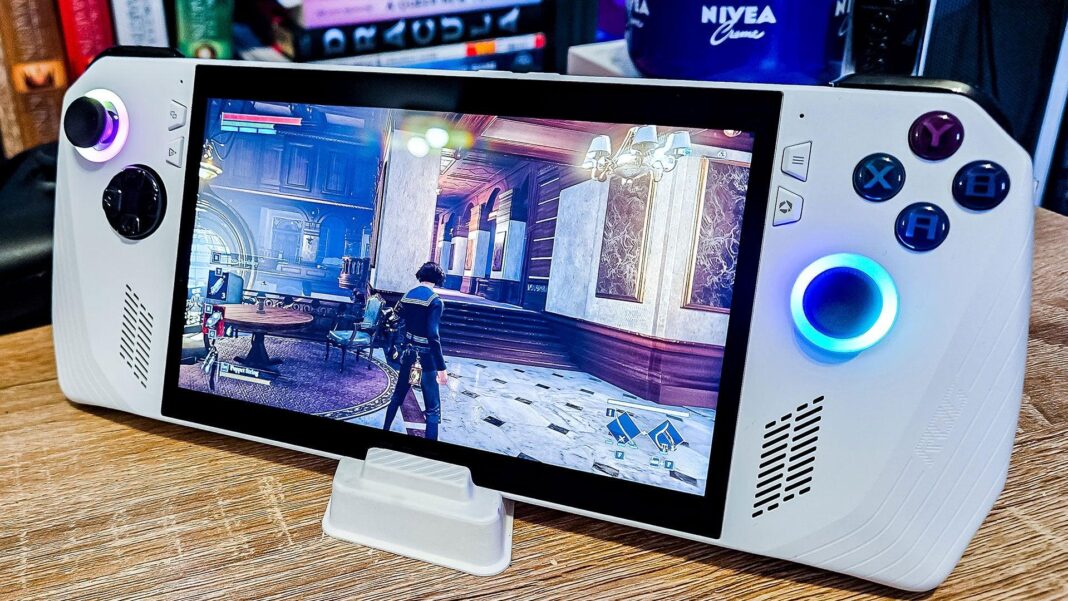In an era where mobile gaming has transcended the limits of smartphones adn tablets, the ASUS ROG Ally emerges as a bold contender in the handheld gaming market.With its sleek design,powerful performance,and promises of immersive gameplay on the go,this portable powerhouse aims to redefine our gaming experiences. But does it deliver on the hype, or is it merely another fleeting trend in the ever-evolving world of technology? In this review, we’ll delve deep into the capabilities of the ASUS ROG Ally, examining its features, strengths, and weaknesses to determine whether it truly lives up to its reputation as a gaming PC for the pocket-sized enthusiast or if it falls short, buried under its own ambitious claims. Join us as we explore what this innovative device has to offer and where it stands in the competitive landscape of handheld gaming.
Performance Insights into the ASUS ROG Ally Gaming experience
The ASUS ROG Ally aims to redefine portable gaming with its notable performance metrics, setting it apart in a crowded market. equipped with a custom AMD APU, the device delivers exceptional processing power that allows users to engage with graphically demanding titles seamlessly. Gamers will appreciate the device’s high refresh rate and reduced input lag, ensuring that fast-paced action remains fluid. This is particularly evident in genres such as first-person shooters and battle royales, where performance can be a game-changer.
Battery life is another critical factor for handheld devices, and the ASUS ROG Ally manages to strike a commendable balance between power and efficiency. Players can expect to enjoy roughly 3 to 6 hours of gaming depending on the intensity of the game being played. This offers a solid window for on-the-go gaming, although heavier titles may require more frequent recharges. to provide a clearer perspective, here’s a simple breakdown of battery performance based on typical usage:
| game Title | Estimated Battery Life |
|---|---|
| The Witcher 3 | 3 hours |
| Apex Legends | 4.5 hours |
| Stardew Valley | 6 hours |

Design and Build Quality Assessment for Portable Gaming
The design of the ASUS ROG Ally is not just about aesthetics; it’s a blend of functionality and portability that gamers crave. the device sports an ergonomic chassis, making it cozy for extended gaming sessions. Lightweight yet sturdy, the construction ensures that it can withstand the rigors of travel while not feeling bulky in hand. Features such as strategically placed buttons, thumbsticks, and triggers facilitate a natural gaming flow, allowing for precision control. Additionally, the RGB lighting accents add a modern flair, appealing to those who enjoy a vibrant visual experience. The choice of materials used also speaks to the quality, as it has a premium feel that stands apart from typical plastic handhelds.
When it comes to build quality, the ASUS ROG Ally excels with its robust assembly and thoughtful design choices. The device incorporates high-grade components that not only enhance performance but also contribute to its durability. With the screen protected by scratch-resistant glass, gamers can rest easy knowing their display can handle the challenges of everyday use. Furthermore, the cooling system is designed to maintain optimal temperatures, preventing overheating during marathon gaming sessions. To visualize these aspects, here’s a brief comparison of key physical specifications that highlight its strengths:
| Feature | Specification |
|---|---|
| Weight | 0.92 lbs (417 g) |
| Screen Size | 7 inches |
| Battery Life | Up to 6 hours |
| Material | High-grade plastic & metal |

Battery Life Evaluation: Is It Truly Reliable for On-the-Go Gaming?
In evaluating the longevity of the ASUS ROG Ally’s battery life for gaming on the go, several factors come into play that may influence a gamer’s experience. Users frequently report the following:
- Lasting Power: With an average battery life of 2 to 5 hours,depending on the game’s intensity,this handheld device can provide a decent window for uninterrupted gaming.
- Real-world Usage: Testing with various titles, it appears that lighter games yield better battery performance, while graphically demanding games draw significantly more power.
- Charging Speed: the device supports rapid charging, allowing players to quickly rejuvenate battery life during short breaks.
However, gamers should remain aware of the practical limitations inherent to a portable gaming device. A comparative table illustrates the consumption of battery life based on different gaming scenarios:
| Game Type | Average Battery Life (Hours) | Power Consumption (W) |
|---|---|---|
| Casual Indie | 4-5 | 10-15 |
| Mid-range Graphics | 3-4 | 15-25 |
| High-end AAA Titles | 2-3 | 25-40 |
Ultimately, while the ASUS ROG Ally delivers a commendable performance for portable gaming, players should plan accordingly, especially when engaging in high-demand titles. The balance between power consumption and gaming pleasure is vital; understanding how to optimize settings can lead to a more satisfying on-the-go experience.

Comparative Analysis: ASUS ROG Ally Versus Established Handheld Competitors
The ASUS ROG Ally has entered a crowded market, competing with well-established handheld consoles like the Nintendo Switch and the Steam Deck. While the Switch captivates players with its library of exclusive titles and portable form factor, the Steam Deck appeals to PC gamers with its powerful hardware and versatility. The ROG Ally positions itself as a bridge between these two worlds, offering gaming performance that rivals customary PC gaming experiences while still maintaining an accessible, handheld format. Key comparisons include:
- Performance: The ROG Ally boasts cutting-edge specs, potentially outperforming older models but requiring careful optimization for smoother gameplay.
- Battery Life: While the Switch excels in battery efficiency, the Ally’s power demands present a challenge, especially during intensive gaming sessions.
- Game Library: Its windows OS compatibility opens doors to a vast library, tho it may lack some popular exclusive titles available on competitors.
To provide a clearer view of how the ASUS ROG Ally stacks up, here’s a brief comparison table:
| Feature | ASUS ROG Ally | Nintendo Switch | steam Deck |
|---|---|---|---|
| Processor | AMD Ryzen Z1 | NVIDIA Tegra X1 | AMD APU |
| Display | 7” Full HD | 6.2” HD | 7” LCD |
| Battery Life | 2-4 hours | 4-9 hours | 2-8 hours |
| Primary OS | Windows 11 | Custom OS | SteamOS |
wrapping Up
the ASUS ROG Ally stands at the intersection of innovation and practical gaming, promising the thrill of handheld gaming while navigating the challenges of battery performance and ergonomics. As we’ve explored, it offers a compelling mix of power, portability, and potential, but whether it lives up to the hype depends on your gaming preferences and priorities. For some, it may be the ultimate portable companion, revolutionizing how we experience games on the go; for others, the limitations could serve as a reminder that harnessing desktop power in a handheld form is no small feat. Ultimately, the ROG ally is more then just a device—it’s a conversation starter in the evolving landscape of gaming technology. As players, we are left to wonder: is the future of gaming in our hands, or is it still waiting around the corner? Only time will tell, but one thing is certain—handheld gaming is poised for exciting developments ahead.




